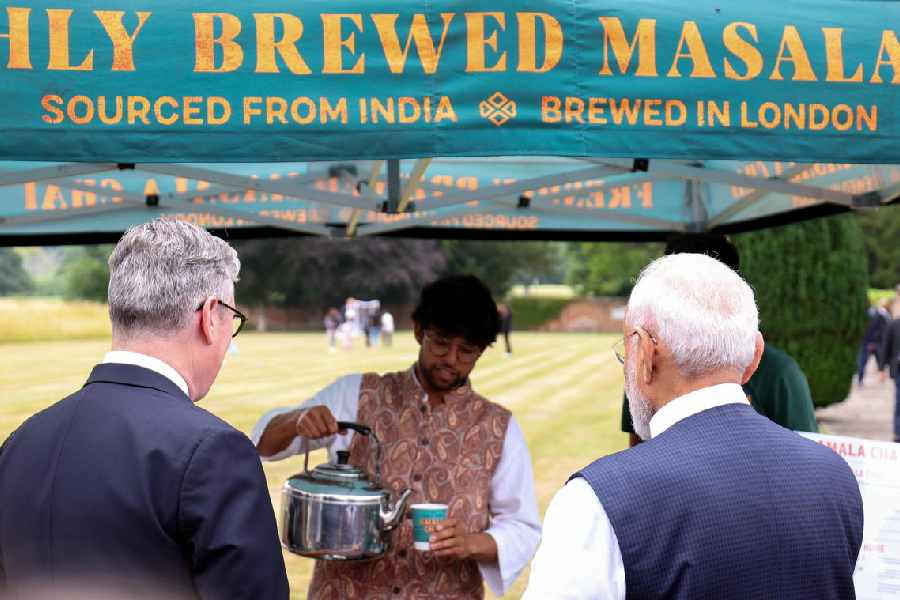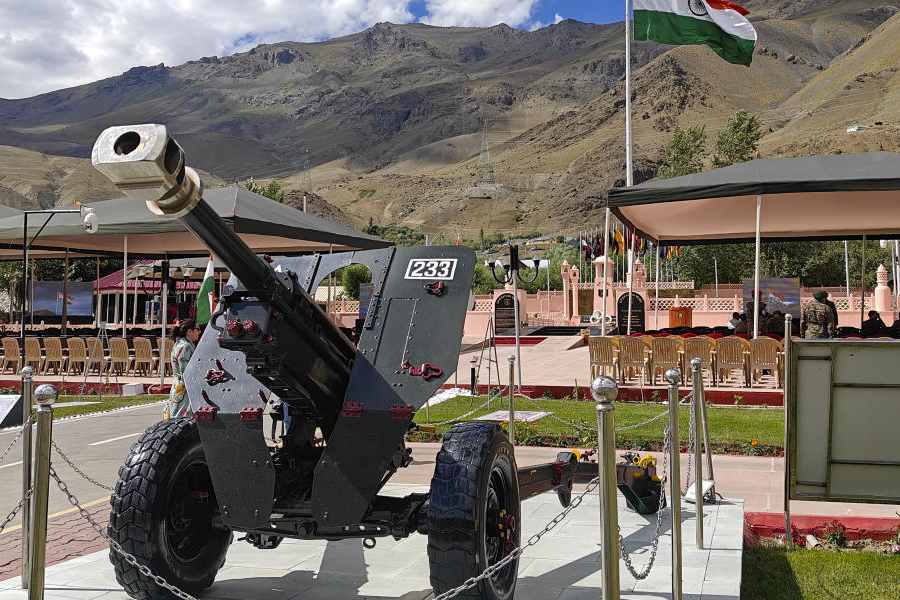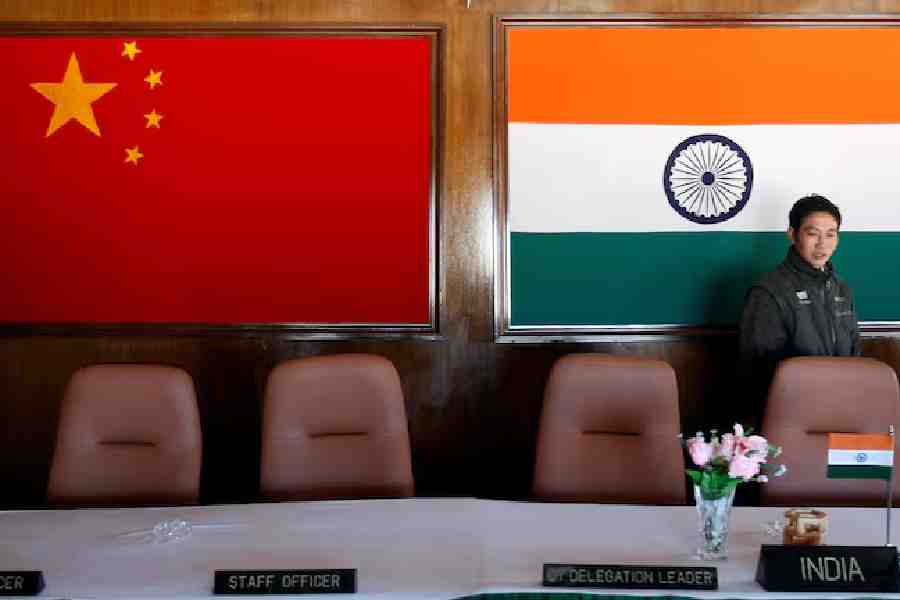
Yellowish green towards the shore, cyan in between and azure far away — spectacular hues near an uninhabited island
Hermit crabs. Small enough to perch on a spoon. Big enough to carry their homes on their heads. They are the most visible and plentiful inhabitants of the sun-kissed beaches of the Andaman islands. Their homes are not originally their own, being salvaged empty shells of snails. Yet how harmoniously they have adapted to their adopted address, much like the refugees uprooted from East Bengal, who made the islands their home post-Partition and today constitute the majority of the settler population.
Waiting to board MV Bandooka after landing at Port Blair by a morning flight, the thought was keeping me company as I found myself in the thick of Bengali chatter. The government-run service is a mainstay of local residents too, at Rs 350 for an air-conditioned ride to Havelock Island. The other option is the faster private catamaran Makruzz, on which the lowest fare is Rs 975. I would take that on the way back.
My seat was beside a porthole but soon chilled to the bone, I scurried to the deck, where the captain and I got talking. “During Hudhud (the cyclone that made landfall in early-October), the waves rose to 4.5m here. Private services were off. Only we were sailing,” he said, proudly. On a board in the engine room, the day’s tides had been chalked — high tide: 1.65m, low tide 0.75m.

Ruins of a printing press at Ross Island
On reaching Havelock two-and-a-half hours later, a guide from my tour operator, Make My Trip (MMT), drove me straight to Radhanagar beach. As I rushed down a narrow road lined with tall betelnut trees, camera in hand, the sun was dipping
in the horizon, bathing the water and the wet silver sand in a luminous orange glow.
It was a magical sight. In fact, I would later regret not having gone to the beaches in Port Blair first.
After Radhanagar, the crowded and dirty Corbyn’s Cove falls woefully short, despite its water-skiing options. Chidiya Tapu, 28km from Port Blair, was better but still no match. Radhanagar, I later learnt, had been voted the best beach in Asia by Time magazine in 2004.
I was put up at SeaShell, a cosy property that had the sea as its backyard. An abundance of dead coral gave the beach surface a rocky feel — a consequence of El Nino, the rise in water temperature, in the aftermath of the tsunami 10 years ago that killed much of the corals.
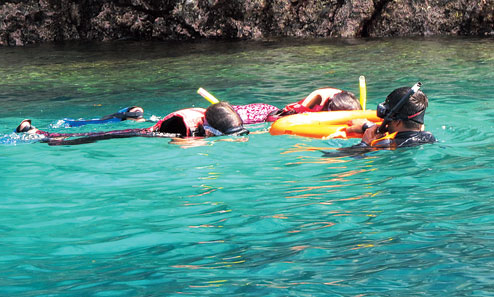
Snorkelling at South Button Island
The breathing roots of mangrove trees cut fine silhouettes against the falling light. There I met Gauri Kundu, a local woman who was wading through the water to reach a boat. “My uncle is visiting us from Diglipur (in north Andaman). We are taking him fishing,” she grinned, underlining that they were not fisherfolk. “I work in a school. My husband runs a shop. We fish only for fun,” she added, rattling off a flurry of names unheard of in city fish markets as possible dinner
options.
It is her type that the guard of our hotel, a mainland man from Kanchrapara in Bengal, is disdainful of. “These
islander Bengalis just fish, eat and drink. They have no idea of investment or banking,” he grumbled as he walked me to my cottage. He accepted that crime rate was minimal in the Andamans but refused to give the settlers any credit. “Where would they run?” he smirked.
Waterworld
The next day I was able to tick off one item from my bucket list. Not being a confident swimmer, I had been advised not to go snorkelling by friends. But when our group was being kitted up at Barefoot Scuba, the biggest underwater sports agency on Havelock, our guide Neil assured me that even non-swimmers could snorkel. So on reaching South Button Island, I put on the snorkelling mask and diving fins. The mask pressed against the nose and cut out the option of breathing through the nostrils. Once into the water, that became such a challenge that I beat a hasty retreat. On the speedboat, as I sat defeated, it struck me that practice could help. So I put on the mask again, taking in gulps of air through the attached snorkelling tube, the end of which I was supposed to bite into, to hold it in place. Soon I was clicking pictures, oblivious of the fact that I was breathing through the mouth. Minutes later, I put on a life jacket and jumped in.
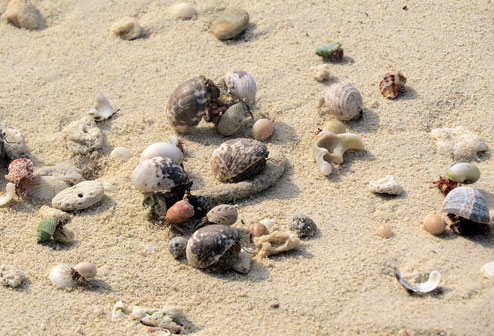
Hermit crabs
As I floated over coral reefs, following Neil, a different world came in view through the underwater glasses. Fish nibbled at colourful algae and electric blue clams sat still. Every now and then, Neil would bob up to mention their names. A snaky moray eel was peeking out of a hole. A black sea urchin rested on a rock, its barbs flapping like a porcupine’s. A school of small squids swam by. The most spectacular was the lion fish, with its plume of reddish orange pectoral fins.
“Don’t go near. Their barbs are venomous,” he warned. A little orange and white fish was hovering around a sea anemone.
“Nemo,” I smiled in familiarity at the clown fish. The next moment Neil dived to point at what looked like a part of the reef. “That’s the biggest stone fish I’ve seen! It’s the most poisonous out here,” he said. On close inspection, I could make out inhaling movement around a slit on its rock-like surface.
Our lunch, brought packed from the hotel, was on an uninhabited island. The leftovers were to be food for the hermit crabs. This experience, our MMT guide said, was part of only their premium package.
The sea afforded a spectacular view as we explored the caverns off the beach — yellowish green towards the shore, cyan in between and azure far away. “Please do not take the shells away,” he added, as we beachcombed for spectacular specimens, of which there were plenty.
We celebrated our snorkelling success by walking to Barefoot Bar by the Havelock jetty in the evening and sampling their mocktails and fresh catches — tuna, barracuda, seer fish, red snapper and more.
On the way back to Port Blair, we had a glimpse of Neil Island, where the catamaran halted. The Bharatpur beach looked fun, with tourists zipping around in jet skis. “Next time,” I told myself.

Cellular Jail
Jailhouse Jaunt
Port Blair, the cleanest Indian town I’ve seen, is about lessons in history and shopping. Head to Sagarika, a government emporium, for shell jewellery, lamp shades, shell-framed mirrors and wood carvings.
Cellular Jail opened a heart-rending chapter on freedom fighters. It demands two visits, one for the light-and-sound show in the evening and another in the day for a guided tour of the prison cells, the hanging room and the area where inmates were put to arduous tasks like extracting oil from coconuts and whipped on failing to achieve the steep targets. To ensure insulation, cells of one wing opened to the back of the cells in the adjacent wing. Once the sun set, they were left alone to pitch darkness and thoughts of home across the seas.
The central columns of each floor now have the names of inmates, most of them from Bengal. The most famous is Veer Savarkar, after whom the airport has been named.
The experience is complemented by a voyage to Ross Island across the jail. Once called Paris of the East, this is where the British stayed in luxury. The island has taken the brunt of the tsunami and saved Port Blair. What remains are walls of buildings that housed the printing press, the water distillery and the church. Caught in dense embrace by roots, they are a photographer’s delight.
A visit to the Anthropological Museum completed the lesson in the islands’ indigenous tribal culture. I was reminded of a Jarawa trio I saw at the dock. “They have come to Port Blair for treatment,” my MMT guide had explained. Looking uncomfortable in ill-fitting shirt and trousers, the man seemed irritated while the women looked striking in colourful traditional headgear — a picture of the uneasy cohabitation of the rooted, under threat of extinction, and the uprooted, who have taken control of their homeland.
Season:
End-September to mid-June
Do not:
Enter restricted tribal areas
Damage corals while snorkelling
Carry away corals or seashells
Light fire in the forests
(Source: Make My Trip guidebook)
Sudeshna Banerjee
Pictures by author





